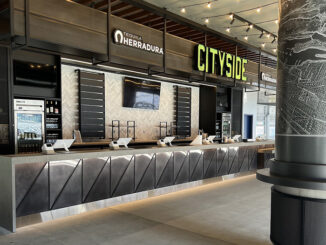
In the fall of 2015, Los Angeles Air Balance Company, Inc. was involved with the air/water testing and balancing and commissioning of a middle school located in Pasadena, California. The mechanical contractor hired the company as the test and balance contractor. After the plans and TAB specification Section 230593 were analyzed, it was determined that the school needed air balance, water balance, and required commissioning, but no sound test specs were applicable—or so it seemed.
Air and water TAB work commenced on the middle school’s new HVAC systems and specialty classrooms. The work was to be done according to TAB specification Section 230593 and/ or in accordance with AABC Standards. Work was almost finished with the air and water balance for this project when there was a verbal request to provide sound testing before commissioning was performed.
As indicated before, the spec 230593 did not contain an acoustics section or any other instructions. There were no standards specified at all. It was assumed that the AABC standard for sound testing would be considered an acceptable testing method/procedure. It was assumed the sound tests would be complete in one extra trip to this jobsite using a standard sound meter/instrument and the change order was priced accordingly. After standard AABC sound testing was completed, the TAB report was finished, submitted, and immediately returned with sound comments.
The general contractor / commissioning agent asked for re-testing of sound performance of the equipment and renovated rooms according to another specification, Section 019113.00, which was not initially provided or reviewed for this middle school. This came as a surprise, not because of the type of tests that were requested, but because there had been no review of any specs concerning sound testing for this job.
The new specs were promptly requested for the special sound testing for the review. The testing required was taken very seriously due to recent studies made by engineers and researchers that have found more information about how sound waves influence the learning environment. Studies show that all students (but primarily special needs students) will benefit and learn better given less impedances when the exterior noise intrusion and reverberation times within the classroom are controlled.
The required standards were based on the California High Performance Schools, (CHPS), Best Practice Manual 2009, Section EQ3.0. Where these CHPS standards differ from the specs used for typical TAB sound performance in the industry today involves exterior noise intrusion and reverberation time. This special testing was legally required for the client based on location and since one of the classrooms being renovated was a Special Day Classroom (SDC), meant to facilitate learning for children with special needs, autism in particular. The background noise was not to exceed 45 dBA LAeq or the room would be automatically deemed unfit regardless of HVAC equipment noise, see Figure on LAeq Energy Averaging.
The dBA LAeq limit is based on the type of room and the dimensions of the room, i.e. area or volume. The exterior noise intrusion level was to be measured twice—once with the HVAC system off, then again with the HVAC system on.
If the difference between the two measurements was less than 5 dB, the equipment sound impact could be deemed “not significant”. If this difference was more than 5 dB, then the exterior noise extrusion was deemed “significant”. These rankings or categories were used to see what type of test the room would further require in order to pass CHPS standards. If considered “not significant,” then a simple 15-second testing sample was acceptable; if deemed “significant,” a more stringent 30-minute test sample would be necessary.
All this background noise testing is conducted on classrooms that have been assessed to represent the worst case exposure to exterior noise intrusion, which is very subjective. This was important because students, especially autistic students, focus and learn better with less background noise to distract.
Next, there was part two in the CHPS standard, regarding reverberation time. In regards to reverberation time testing, the classrooms were to be unoccupied and “finished” during reverberation testing. According to spec, measurements would be made in general accordance with ANSI S12.60-2002 annex E4. The arithmetic average of the reverberation time would be compared in the 500, 1000, 2000 Hz octave band frequencies for each room against the CHPS Best Practice Manual 2009, EQ3.0 Acoustical Prerequisite.
The two rooms included in the sampling for testing were the SDC and the science classroom. The way the test was to be conducted in the furnished, unoccupied rooms was to measure the reverberation time within the room from a balloon popped in the center of the room. The maximum reverberation time for core learning spaces with internal volumes greater than 10,000 cubic feet should not exceed 0.6 seconds, or else the room is deemed unfit for a learning space. Although some reverberation within the classroom is good and can aid in speech distribution, too long of a reverberation can cause speech intelligibility degradation due to the noise build up.
After reading all of these new specs and understanding the CHPS standards, it seemed easy enough to test reverberation time. It was then realized that there was a specialized sound meter required to perform the “pop” reverberation time test. While features of the sound testing equipment and instruments on hand were reviewed, it was discovered that there was nothing that could measure reverberation time.
Searching online is usually a relatively easy way to find any instruments but it was more difficult to find the instrument necessary for this type of unique reverberation sound testing. There were only two companies found that sold this kind of meter, so one was obtained. They were the only meters found that measured reverberation time in the small increments necessary, in the frequencies mandated, and were portable and battery powered.
Using the reverberation time meter, the reverberation times could be measured for each of the classrooms to determine whether the rooms truly met the standard put forth by CHPS Best Practice Manual. It is anticipated this CHPS standard will soon be more prevalent since autism diagnosis has been increasing at a surprising rate over the past couple of decades. A rising population means there are more children, which in turn means more students with special needs. Although sound testing and lowering the amount of noise created by the HVAC system is very helpful, in most cases the room construction plays a larger role in allowing more background noise and longer reverberation times.
Could it soon be part of the TAB agency’s job to find weaknesses in the room construction that would allow too much exterior noise intrusion and point these imperfections out to the general contractor or owner? This standard along with the use of the specialized sound instruments previously mentioned helps to promote proper learning spaces for our schools and will provide a better, more productive classroom setting for the increasing number of children with special needs.



